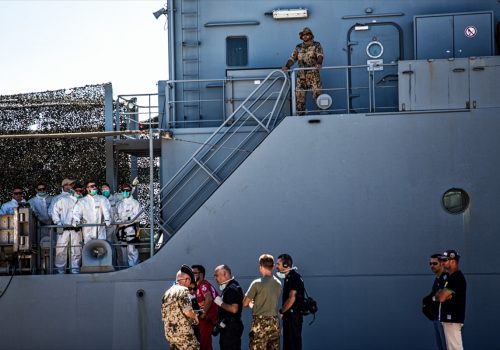What happens to the bodies of deceased migrants? When they are identified and when they are not? In 2011, a young migrant met by Max Hirzel in Mali and told him: “In the desert, I saw a grave, it was a girl from Douala, and I wondered if her parents knew that their child was there “.
On one side of the Mediterranean, in Italy, scientists are working to restore the identity of the dead. On the other hand, in Senegal, families without news of their relatives are unable to mourn.
A blue trawler, in which more than 800 migrants died on April 18, 2015 in the Mediterranean, arrived at NATO’s military base in Mellili, Sicily. 675 corpses of migrants must be identified by forensic Cristian Cattaneo and his team at the Labanof Institute. The Italy of Matteo Renzi, then Prime Minister, decides to pull up the bodies and find their identity.
Max Hirzel graduated in photography at the European Institute of Design in Milan in 1990. After three years as an advertising photographer, in 1993 he left professional photography; He lives and works in North Africa, the Middle East, India, Southeast Asia and Latin America. Since 2010, he came back to photography as a photojournalist; in 2011, he made reportages in Mali and Senegal, then in Tunisia for the October elections. In 2012, he directed with Marida Augusto the video documentary “in the center” on the Italian management of the reception of refugees from the Libyan war, winning the prize for photography at So.Docu. (Social Documentary) Film Festival. Since 2013, he has been with the Haytham Pictures agency, distributed by Rea photo agency, and during the last years he has been producing reportages in India, Palestine, Brazil and Italy.
https://maxhirzel.photoshelter.com/index
Opening on February 6th at 6 pm Projection of the hearts of our jury 2018
The ANI Visas: Max Hirzel – Corps migrants, Italy
February 5 to 23, 2019
Gobelins – L’école de l’image
73, boulevard Saint-Marcel, 75013 Paris
















